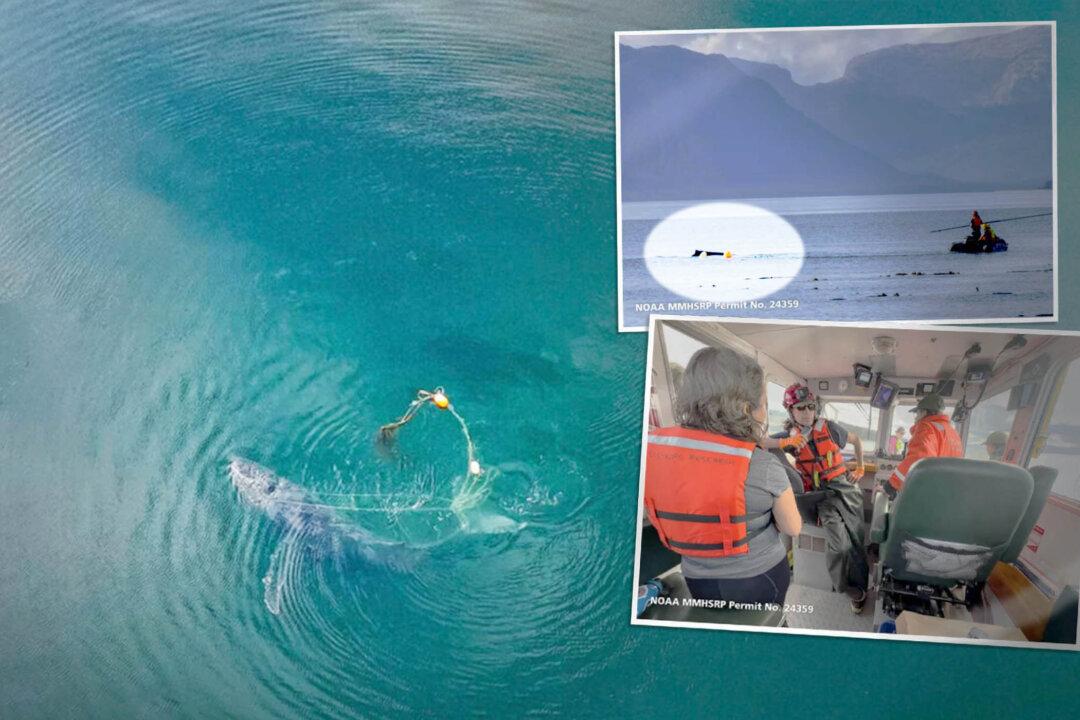A dire call about a whale entangled by buoys was made by Alaskan residents who alerted staff at Glacier Bay National Park last October. A scouting team immediately deployed to Icy Strait, in southeast Alaska, where the whale was spotted off the coast of Gustavus.
Working in concert, biologists from the National Park Service (NPS) and staff at the National Oceanic and Atmospheric Administration (NOAA) found that a juvenile humpback whale had become entangled in a 450-pound line and two buoys connected to a crab pot that weighed 350 pounds, anchoring it to the seafloor.






